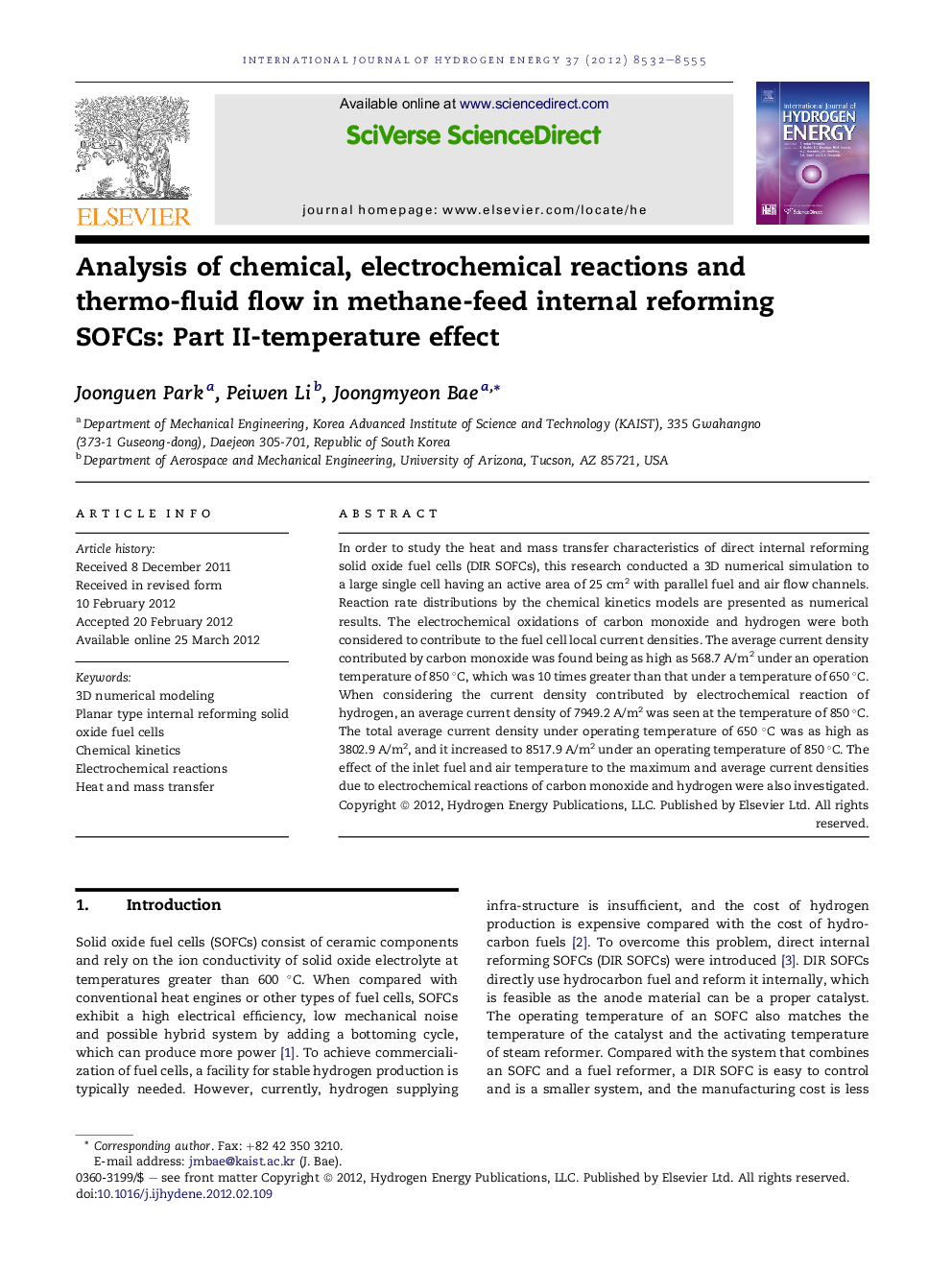| Article ID | Journal | Published Year | Pages | File Type |
|---|---|---|---|---|
| 1275354 | International Journal of Hydrogen Energy | 2012 | 24 Pages |
In order to study the heat and mass transfer characteristics of direct internal reforming solid oxide fuel cells (DIR SOFCs), this research conducted a 3D numerical simulation to a large single cell having an active area of 25 cm2 with parallel fuel and air flow channels. Reaction rate distributions by the chemical kinetics models are presented as numerical results. The electrochemical oxidations of carbon monoxide and hydrogen were both considered to contribute to the fuel cell local current densities. The average current density contributed by carbon monoxide was found being as high as 568.7 A/m2 under an operation temperature of 850 °C, which was 10 times greater than that under a temperature of 650 °C. When considering the current density contributed by electrochemical reaction of hydrogen, an average current density of 7949.2 A/m2 was seen at the temperature of 850 °C. The total average current density under operating temperature of 650 °C was as high as 3802.9 A/m2, and it increased to 8517.9 A/m2 under an operating temperature of 850 °C. The effect of the inlet fuel and air temperature to the maximum and average current densities due to electrochemical reactions of carbon monoxide and hydrogen were also investigated.
► Internal reforming SOFCs were investigated under various operating temperatures. ► Total current density was 8517.9 A/m2 under a system temperature of 850 °C. ► Average current density under 850 °C was 2.2 times higher than that under 650 °C. ► The effect of inlet temperature was less sensitive than that of system temperature. ► Total current density under an inlet temperature of 850 °C was 7840 A/m2.
